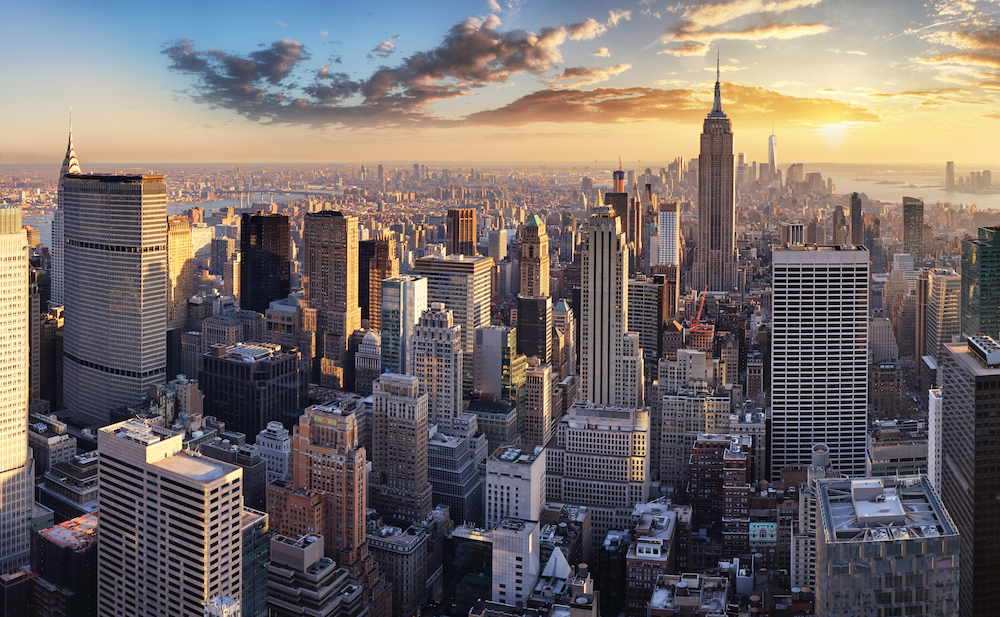Last month, Swedish activist Greta Thunberg posted on Instagram “Change is coming, whether you like it or not” when discussing the global climate strikes.
With millions of people actively demanding action from governments and corporations towards a more sustainable society, what are the strategies adopted by brands to adapt to these shifting consumer priorities?
Steps are being taken by private and governmental bodies
Sustainability, meaning “the avoidance of the depletion of natural resources in order to maintain an ecological balance” (the Oxford Dictionary), is the latest trending topic. A more encompassing definition refers to only consuming what you need versus what you want without it being at the expense of others (including but not limited to: fair wages, decent living conditions and ethically sourced materials).
In 2015, the United Nations assembly got together to agree on The Sustainable Development Goals to be achieved by 2030. Among the 17 Goals are the three key ones below, which underline the realization that change can be driven both at an individual and collective level by changing consumption habits:
- Goal #2: Good health & well-being
- Goal #12: Responsible consumption and production
- Goal #13: Climate action
In 2017, the Prince of Wales convened a group of CEOs from the apparel and textile industry, enforcing them to commit to sourcing 100% sustainable cotton by 2025 under the Sustainable Cotton Challenge. Personal bodies are also enforcing sustainable initiatives such as: opting to carpool to work, switching from plane to train transportation, buying local and seasonal products etc.
Evidently, encouraging steps are being taken by both private and governmental authorities although there is much room for improvement.
So how does consumers’ perception of climate and environmental challenges come into play in relation to their spending behaviour? And who drives the change towards sustainability in the retail industry? Brands, consumers, or policies?
Brands are acknowledging the need to play a role in creating a more sustainable model of consumption
In 2018, luxury household name Burberry came under fire (no pun intended) when it was revealed that $36.5 million worth of unsold stock of perfume, clothing, and accessories, had been destroyed in efforts by the company to avoid brand devaluation. The backlash from the public and environmental agencies was colossal, to the point that the brand was forced to reposition its strategy. Hence, Burberry laid out to the public a Responsibility Agenda “designed to build position change and build a more sustainable future” with three key goals to be reached by 2022.
- Positively impact 1 million people.
- Be carbon neutral & revalue waste.
- Drive positive change through all products.
“Modern luxury means being socially and environmentally responsible” stated Burberry Chief Executive Marco Gobbetti.
Other brands, such as California-based Everlane and Reformation, are taking transparent and ethical work stances by offering long lasting quality clothing or recyclable products such as cosmetic brand Kinship, while larger companies have made public pledges to end their polluting practices. Case in point is Zara, which announced that all of its collections would be made with 100% sustainable fabrics by 2025.
Greenwashing or Genuine Commitment?
Although this all sounds very promising, the end goal for all corporations is profit. Simply put, the battlefield for market shares and customer loyalty has now moved to the realm of environmental sustainability with the general population being increasingly more concerned about the effects climate change will have on their living environment.
This doesn’t mean that profit and sustainability are incompatible but rather that common “greenwashing” techniques – deceptively using means to persuade their consumers that their products or policies are environmentally friendly – such as:
- Celebrating Earth Day;
- Posting nature background photos on social media;
- Offering reusable tote bags in exchange for minimum spending in store;
To appeal to customer’s desire to purchase guilt-free are no longer cutting it. In the same way, commitment to sustainability goals are challenged by consumers should brands fail to meet their targets.
Similarly, e-commerce has completely changed the way how we consume, with millions of products available at our fingertips. During the first minute alone of Alibaba’s 2019 Single Day’s promotion, over $1 billion of goods were sold in China. More ethical shipping practices (using recyclable materials, switching from plastic to cardboard, tape free boxes) are increasingly becoming the new normal.
Although many brands’ first steps towards a more sustainable business model were initiated by public backlash, this has had positive effects on the industry altogether. The same can be said about organic products, which are also part of the sustainability movement. Organic food products are grown under a system of agriculture with a socially responsible and environmental approach (growing products without pesticides or fertilizers).
How are products sourced, created and can they be recycled? What is their carbon footprint, are they good for my health? These are some questions among many being consistently raised by end buyers.
The Sustainability Movement in China
“There is no luxury without China, there is no sustainability without China” remarked Francois Pinault, CEO of Kering during a ceremony in Shanghai recently.
What’s applicable in the West for brands needs to be adapted to the mindset of Chinese consumers. Tackling sustainability remains largely a top down governmental long-term goal rather than personal initiatives. Hence, although sustainability is becoming a topic of interest to shoppers, it is still geared towards personal interest versus the greater good in China.
In the luxury sector for example, companies selling online second-hand or past-season fashion merchandise such as Vestiaire Collective, Hula or On the List are tapping into a new pool of consumers interested in snatching labels for the best value for money. Although brands’ emphasize sustainability as a selling point, what ultimately draws Chinese customers is the lower price bracket for guaranteed fashion labels from the biggest fashion houses (Louis Vuitton, Balenciaga, Marc Jacobs).
In the fast retail sector, circular economy initiatives are being tested such as the freshly announced collaboration between H&M and YCloset – a Chinese clothes sharing platform counting 15 million subscribers – to see whether the consumers are interested in this channel and to gather more data about consumer behavior.
Another point of interest for these selective consumers is the concern for safe consumption goods in line with personal health interest. Hence, the purchase of organic foods and materials are on the rise.
In fact, in China, over half of consumers are willing to pay up to 25% more for food products that are organic. Home grown brands such as eco-friendly retailer Klee Klee or Hong Kong based OrgHive, a unique social and content platform for organic goods are the latest proponents of this new consumption model.
Using Social Listening to unlock the conversations consumers are having about your brand
As a brand, tuning into what your customers or the general public is saying about your products and company ethics is key to adjusting your market positioning: especially in China where the digital landscape has an ecosystem of its own. Are your sustainability commitments gaining traction or even deemed credible? Are your competitors gaining an edge over you because they have taken steps to make their products less harmful to the environment?
IMS builds sophisticated consumer modelling using data and machine-learning, which collects and aggregates insights about your brand that address those business and marketing question marks. We can help leverage social listening capabilities to analyze market sentiment on sustainability topics and guide your brand’s strategy based on these results. Undeniably, brands that can weave in demonstrable sustainability measures into their business models will be able to carve themselves a piece of today and tomorrow’s trend towards a more responsible consumption model.
Get in touch to learn more about the China market and how we can help drive your marketing strategy through social intelligence.



